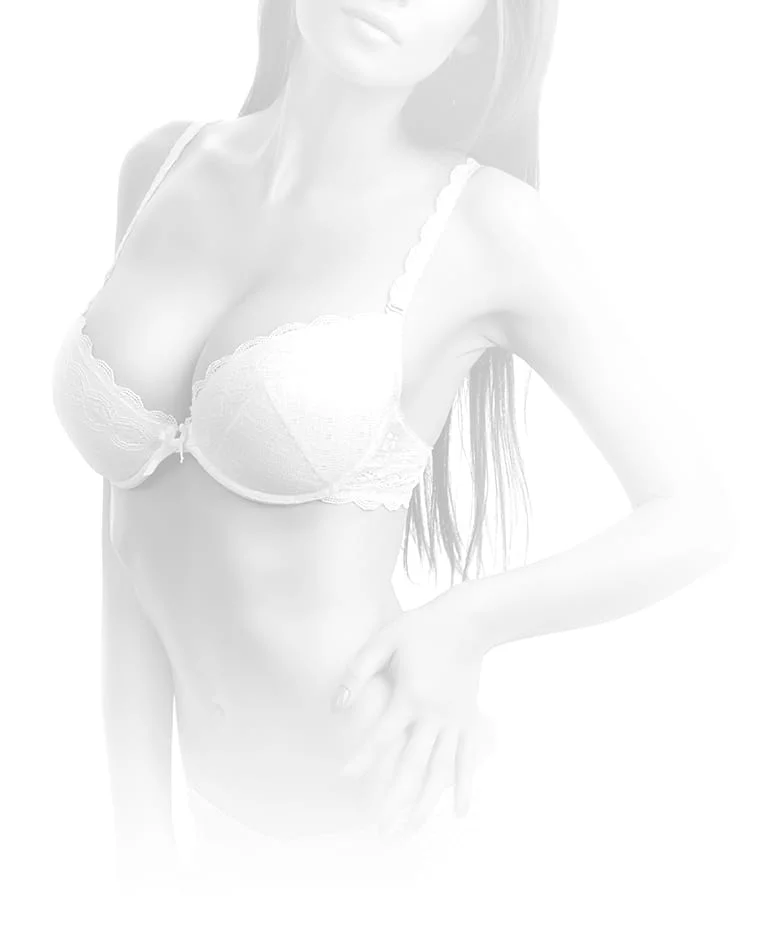Home|Blog | Am I Bottoming Out After Breast Augmentation?
Am I Bottoming Out After Breast Augmentation?
mong the most satisfied plastic surgery patients are those who have had a breast augmentation. Having your breasts enhanced can be incredibly rewarding. However, no surgery is without risk and complications and untoward outcomes can occur. One example of a relatively uncommon implant related “complication” is “bottoming out,” which results in a noticeable alteration of the appearance of the breasts.
Breast revision surgery can correct this bottoming out, improving one’s breast augmentation results.
 What Is Bottoming Out?
What Is Bottoming Out?
Bottoming out occurs when a breast implant slips downward from where it was initially placed. One or both implants may descend on the chest, often triggered by gravity, weight fluctuations, pregnancy, poor bra support, aging, trauma, and/or skin stretching. This is usually a gradual process that occurs over time. It is more likely to happen in patients whose implants are too large in proportion to their natural breast tissue, but it can also occur when there is surgical over-dissection of the breast pocket or a disruption of supportive structures at the bottom of the breast.
How to Recognize Bottoming Out
You can recognize bottoming out by one or more of the following symptoms:
- Lost Volume in Upper Breast: Because the implant has moved downward, the upper portion of your breast may have less volume than it previously had.
- Increased Volume in Lower Breast: The full weight of the implant will be in the lower portion of your breast, creating more volume in the lower breast pole.
- Upward Pointing or Rising Nipple: With the downward shift of the implant, the nipple may be turned slightly upward. The nipple-areolar complex may also appear higher on the breast.
- Rising Inframammary Scar: After breast augmentation with an inframammary incision, bottoming out may cause the scar to look as though it is rising upward on the breast. The descending implant will have dropped below the natural breast fold, moving the scar location upward, and creating a new fold lower on the chest.
- Disappearing Breast Crease: Bottoming out may cause the natural fold beneath the breasts to disappear or become poorly defined.
- Stretching Skin: Skin stretching can lead to bottoming out of the implant.
- Thinning Skin Under the Breast: The increased pressure of the implant on the lower breast pole may cause the skin under the breast to appear thinner.
- Double Bubble Deformity: Bottoming out can sometimes be accompanied by double bubble deformity. Double bubble is when there are two distinct mounds on the breast, with one being the natural breast tissue and the other being the displaced implant.
- Lateral Displacement: In addition to sliding downward, the implant may also appear to have slid to the side.
- Discomfort or Pain: Bottoming out may be accompanied by discomfort or pain, especially in the lower breast.
What Should I Do if I’m Bottoming Out?
If you think that one or both of your implants are bottoming out, schedule a consultation in order to evaluate your situation. If your breast surgeon is a board-certified plastic surgeon who you are comfortable with and is skilled in breast revision surgery, consider having him/her perform your surgery. However, if you lack confidence in your original surgeon, feel that he/she used a poor technique that led to your bottoming out, or he/she is not a board-certified plastic surgeon, you should find a new and reputable plastic surgeon.
How Breast Revision Surgery Will Help
As a board certified and highly experienced breast surgeon, Dr. Turkeltaub understands the risks of breast augmentation and is prepared to resolve any complications or undesirable results that may have occurred. He has extensive experience in breast revision surgery including in situations where bottoming out has occurred.
To resolve the issue, Dr. Turkeltaub will directly address the specific issues causing the deformity. This may include removal of excess skin, recreating an appropriately sized and positioned breast pocket, recreating tissue support, and even recommending to reduce the size of your implants if they are inappropriately too large for your anatomy. After your breast revision, your implants will be in a higher and more desirable position, and your breasts configured to result in a more natural and attractive appearance.
Bottoming out, double bubble, capsular contracture, and other implant complications can prevent you from enjoying your breast augmentation results. Breast revision surgery can correct these issues and restore beautiful breasts. To schedule your consultation with Dr. Turkeltaub, please call (480) 451-3000 or complete our online contact form today.
